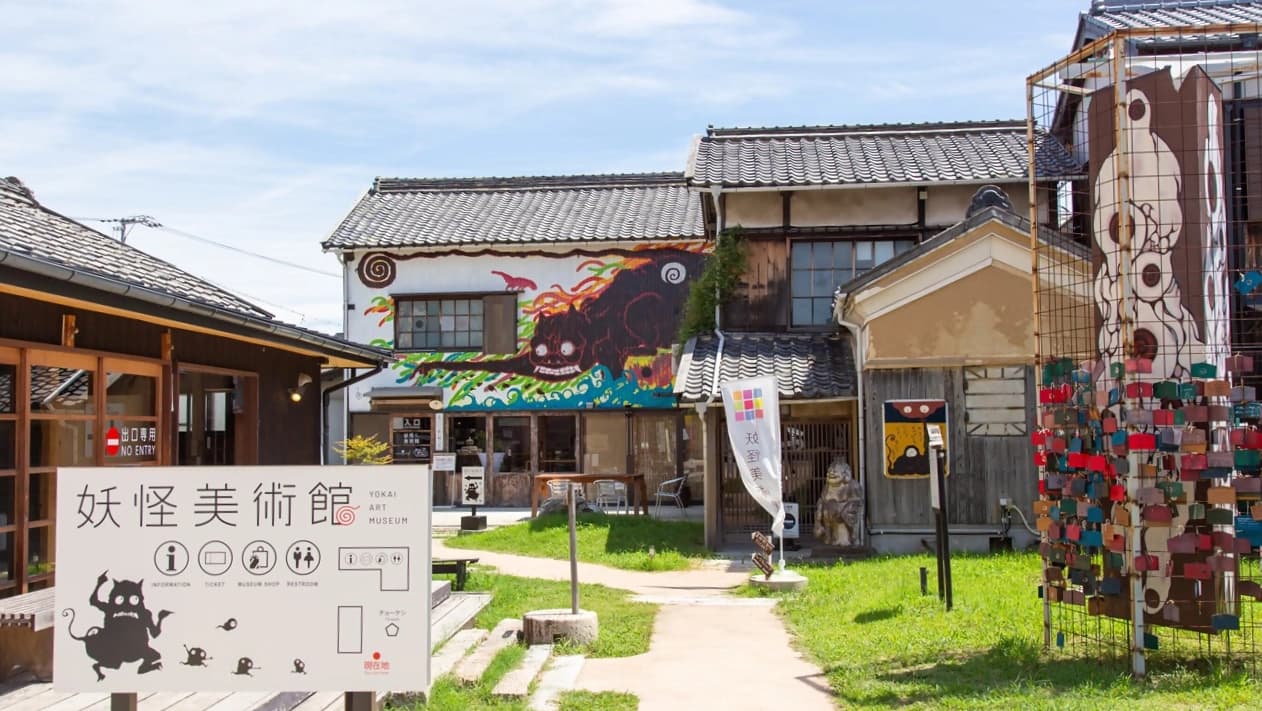
Teshima Art Museum
豊島美術館The Teshima Art Museum stands as a remarkable architectural and artistic achievement on Teshima Island, overlooking the Seto Inland Sea. Created through the collaboration of artist Rei Naito and architect Ryue Nishizawa, this unique institution represents a harmonious fusion of art, architecture, and nature.
Architecture and Design
The museum building resembles a giant water droplet that has landed on the earth, constructed using a concrete shell structure measuring approximately 40 × 60 metres with a maximum height of 4.3 metres. The structure contains no supporting pillars, creating an uninterrupted interior space that allows for complete immersion in the artwork.
Two strategically placed openings in the ceiling serve as the building's connection to the natural world, directly introducing wind, sound, and light from the surrounding environment. This design creates an organic space where the building responds to and interacts with the natural elements throughout the day and across seasons.
The museum sits on land that was once abandoned rice terraces, which have been carefully restored in collaboration with local residents. Native plants from Teshima Island compose all the landscaping around the facility, maintaining the site's connection to its agricultural heritage while creating a pathway that allows visitors to experience the land's beautiful scenery and history.
The Artwork: Matrix
The centerpiece of Teshima Art Museum is Rei Naito's installation titled "Matrix" (Mother Prototype). This perpetual artwork consists of springs of water that emerge continuously throughout the day from various points across the museum floor. The water appears mysteriously, creating an ever-changing landscape that responds to the light, wind, and sounds entering through the ceiling openings.
Visitors witness an infinite variety of expressions as the installation interacts with natural elements - birds singing, rain falling, snow drifting, and insects moving through the space. The artwork invites contemplation and encourages visitors to experience a sense of unity with nature, potentially evoking what Naito describes as "the joy of earthly existence."
The Artist: Rei Naito
Born in Hiroshima Prefecture in 1961, Rei Naito currently works from Tokyo. She graduated from Musashino Art University's Department of Visual Communication Design in 1985. Naito gained significant attention in 1991 with her work "To Place One Location on Earth" at Sagacho Exhibit Space, later exhibiting the same piece at the Japanese Pavilion of the 47th Venice Biennale in 1997.
Her artistic practice consistently explores the theme "Is existing on earth itself a blessing?" Major solo exhibitions include presentations at the National Museum of Modern Art in Osaka, the Carmelite Monastery in Frankfurt, the Kamakura Museum of Modern Art, the Tokyo Metropolitan Teien Art Museum, and the Museum of Contemporary Art in Tel Aviv.
Her permanent installations include "This Thing" at Art House Project Kinza in Naoshima and "Matrix" at Teshima Art Museum. Naito has received numerous awards including the Japan Contemporary Art Encouragement Prize, the first Asahi Beer Art Award, the 60th Mainichi Art Award, and the 69th Art Selection Minister of Education, Culture, Sports, Science and Technology Award.
The Architect: Ryue Nishizawa
Born in Tokyo in 1966, Ryue Nishizawa completed his master's degree at Yokohama National University in 1990 and subsequently joined Kazuyo Sejima's architectural office. In 1995, he co-founded SANAA with Sejima, and established his own practice, Ryue Nishizawa & Associates, in 1997. He currently serves as a professor at Yokohama National University's Graduate School of Architecture.
Nishizawa has received prestigious recognition including the Golden Lion at the 9th International Architecture Exhibition of the Venice Biennale in 2004 and the Pritzker Prize in 2010. His notable works include the Weekend House in Gunma, the 21st Century Museum of Contemporary Art in Kanazawa (with Sejima), the Honmura Lounge & Archive in Naoshima, the Moriyama House in Tokyo, the Naoshima Ferry Terminal (with Sejima), and the Towada Art Center in Aomori.
Facilities and Services
Teshima Art Museum Cafe
Adjacent to the main museum building, the cafe occupies a space designed by Ryue Nishizawa. Natural light floods through openings in the structure, creating a calming environment that maintains the museum's connection with nature. The cafe serves items made with local ingredients, including strawberry soda prepared with strawberry puree from Teshima farmers and lemon roll cake made with Teshima-grown lemons.
Museum Shop
The shop offers a comprehensive selection of books about the museum, original merchandise, publications related to Rei Naito and Ryue Nishizawa, and local food products from Teshima and the Seto Inland Sea region. The Teshima Art Museum Handbook contains photographs documenting the museum's transformations throughout a complete day, along with texts by both the artist and architect.
Special Programs
Morning Special Viewing Program
This exclusive program allows visitors to experience the museum during the magical moments when the day begins and water first emerges from the floor. The program runs from 9:00 to 10:00 AM on selected Sundays throughout the year, with a capacity limited to 20 participants. Early reservation is recommended, and the museum reopens for regular visitors at 10:00 AM, allowing program participants to re-enter if desired.
At Hey Japan!, we strive to keep the places listed on our website as current as possible. However, it is important to note that location owners or management may make changes to their plans, including canceling events, altering opening times, or modifying admission requirements, without prior notice. To ensure that you have the most accurate information, we recommend checking official websites before visiting any location.
Last Updated:











